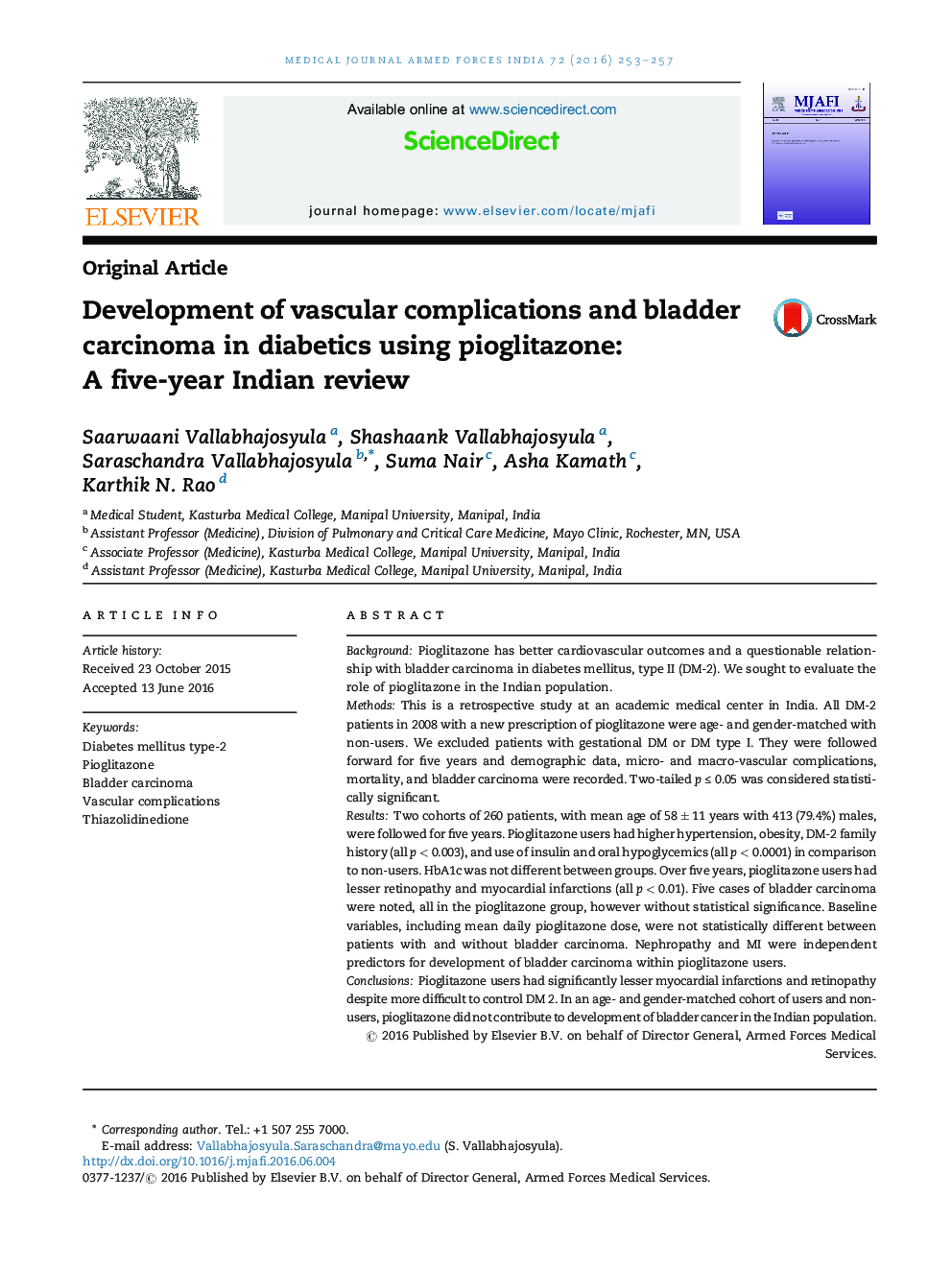| Article ID | Journal | Published Year | Pages | File Type |
|---|---|---|---|---|
| 3160853 | Medical Journal Armed Forces India | 2016 | 5 Pages |
BackgroundPioglitazone has better cardiovascular outcomes and a questionable relationship with bladder carcinoma in diabetes mellitus, type II (DM-2). We sought to evaluate the role of pioglitazone in the Indian population.MethodsThis is a retrospective study at an academic medical center in India. All DM-2 patients in 2008 with a new prescription of pioglitazone were age- and gender-matched with non-users. We excluded patients with gestational DM or DM type I. They were followed forward for five years and demographic data, micro- and macro-vascular complications, mortality, and bladder carcinoma were recorded. Two-tailed p ≤ 0.05 was considered statistically significant.ResultsTwo cohorts of 260 patients, with mean age of 58 ± 11 years with 413 (79.4%) males, were followed for five years. Pioglitazone users had higher hypertension, obesity, DM-2 family history (all p < 0.003), and use of insulin and oral hypoglycemics (all p < 0.0001) in comparison to non-users. HbA1c was not different between groups. Over five years, pioglitazone users had lesser retinopathy and myocardial infarctions (all p < 0.01). Five cases of bladder carcinoma were noted, all in the pioglitazone group, however without statistical significance. Baseline variables, including mean daily pioglitazone dose, were not statistically different between patients with and without bladder carcinoma. Nephropathy and MI were independent predictors for development of bladder carcinoma within pioglitazone users.ConclusionsPioglitazone users had significantly lesser myocardial infarctions and retinopathy despite more difficult to control DM 2. In an age- and gender-matched cohort of users and non-users, pioglitazone did not contribute to development of bladder cancer in the Indian population.
